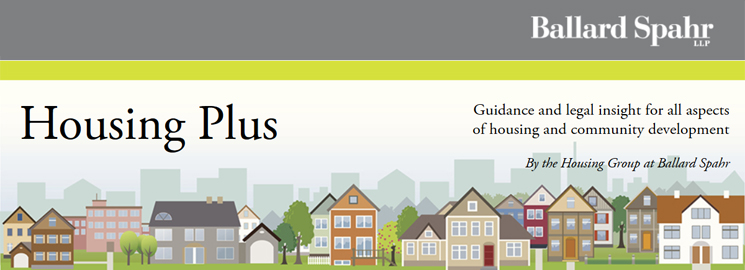
On March 23, 2016, HUD published a notice in the Federal Register to announce the issuance of an Affirmatively Furthering Fair Housing Assessment Tool for Public Housing Authorities (the “PHA Assessment Tool”).
Under the Affirmatively Furthering Fair Housing (“AFFH”) final rule published on July 16, 2015, program participants are required to conduct an Assessment of Fair Housing (“AFH”), which replaces the Analysis of Impediments previously required. To help participants complete the AFH, HUD committed to providing a fair housing assessment tool that could “be used by program participants to evaluate fair housing choice in their jurisdictions, to identify barriers to fair housing choice at the local and regional levels, and to set fair housing goals to overcome such barriers and advance fair housing choice.”
The PHA Assessment Tool is the last of three tools issued by HUD for use when completing the AFH. The other tools are the Local Government Assessment Tool and State and Insular Area Assessment Tool. Local Government Assessment Tool is final, while the State and Insular Area Assessment Tool is currently in its initial comment period. Click here to access additional information about the three tools.
Click here to access the PHA Assessment Tool, which will be used by PHAs undertaking the AHF on their own or when collaborating with other PHAs. A comparison of the PHA Assessment Tool to the final Local Government Assessment Tool, which can be used by PHAs when collaborating with local governments, is available here.
The PHA Assessment Tool will be subject to two comment periods: the current 60-day comment period ending May 23, 2016, and a subsequent 30-day comment period following a second HUD notice once the first round of comments has been considered.
In particular, HUD solicits comments on the following topics:
1) Whether the PHA Assessment Tool’s instructions are effective in explaining the terminology used and in explaining the analysis required by the tool. If commenters believe the instructions could be improved to provide more clarity for PHAs that are inexperienced in using data to assess fair housing issues, please specify ways in which HUD could revise the instructions or give more detailed guidance in the AFFH Rule Guidebook to provide more clarity for inexperienced PHAs about the HUD-provided data and the required analysis.
2) Whether PHAs and Qualified PHAs, expect to collaborate when submitting an AFH and, if so, the types of entities that they expect to collaborate with – i.e., states, local governments, or other PHAs. In addition, HUD seeks comment on the ways in which the PHA Assessment Tool can facilitate a collaborative AFH by a PHA and one or more Qualified PHAs. How could a joint or regional assessment using the PHA Assessment Tool be structured in a way to fulfill a regional analysis for Qualified PHAs in different types of areas, e.g. within metropolitan statistical areas, or in non-metro areas, including rural areas?
3) Whether adding sections focused on PHA programs will better facilitate the fair housing analysis PHAs must conduct, or, whether these questions should be combined with the “Other Publicly Supported Housing Programs’’ subsection, using a structure similar to what was used in the Local Government Assessment Tool.
4) Whether conducting the new ‘‘Fair Housing Analysis of Rental Housing’’ for all PHAs will result in a more robust analysis of fair housing in the PHA’s service area and region, even for PHAs that only administer public housing. HUD seeks comment on whether this section should apply only to PHAs that administer HCVs and, if so, asks commenters to provide the reasoning.
5) Whether the PHA-specific contributing factors listed in the PHA Assessment Tool, including: restrictions on landlords accepting vouchers, impediments to portability, and policies related to payment standards, FMR, and rent subsidies, are the most relevant contributing factors for PHAs for purposes of conducting a fair housing assessment and setting fair housing goals and priorities. Commenters are asked to state if there are contributing factors that are not relevant for PHAs, and to please identify them and provide an explanation for why they are not relevant to a PHA’s fair housing analysis. Commenters are also asked if additional contributing factors should be included, and to please provide the factor and an explanation of why it is relevant to a PHA’s fair housing analysis.
6) Whether the reordering of sections in the proposed PHA Assessment Tool to list the Disability and Access Analysis section before the Publicly Supported Housing Analysis will better facilitate the PHA’s fair housing analysis.
7) Whether there is an efficient manner which HUD could use to obtain information about each PHA’s service area without causing unnecessary burden. In order to provide data to assist PHAs in conducting their AFH, HUD will need to obtain information about each PHA’s service area in order to provide relevant data to the PHA, but HUD does not currently have data broken down by service area for all PHAs.
8) Whether PHAs have relevant information related to families on their waiting lists to determine how fair housing issues may affect such families, and whether HUD is asking the appropriate questions with regards to this population or are there alternative considerations that PHAs should be asked to consider as part of the analysis.
Beyond these specific areas, HUD also seeks comments on the following general areas:
1) Whether the proposed collection of information is necessary for the proper performance of the functions of the agency, including whether the information will have practical utility.
2) The accuracy of the agency’s estimate of the burden of the proposed collection of information.
3) Ways to enhance the quality, utility, and clarity of the information to be collected.
4) Ways to minimize the burden of the collection of information on those who are to respond, including through the use of appropriate automated collection techniques or other forms of information technology, e.g., permitting electronic submission of responses.